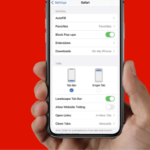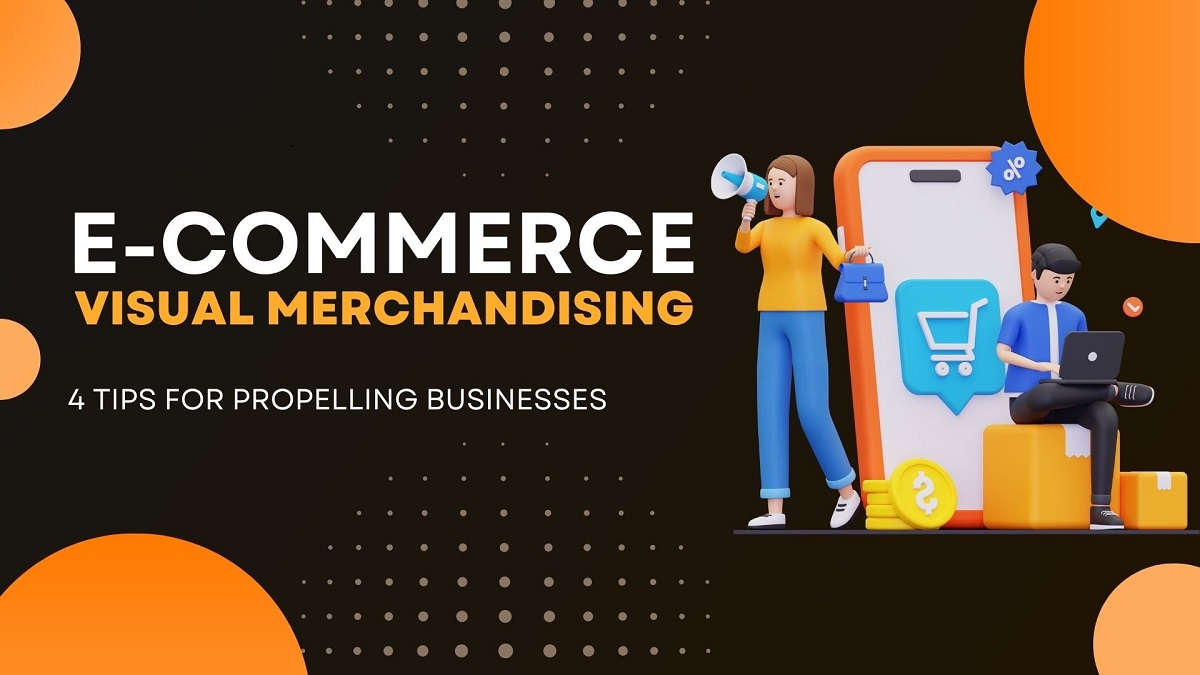Ecommerce merchandising isn’t just about listing products online; it’s an art form that can make or break your business. Ever wondered why some online stores captivate you from the moment you land on their homepage, while others leave you clicking away in seconds? The secret lies in effective ecommerce merchandising.
You’re not only showcasing products; you’re curating an experience. By strategically presenting items, utilising compelling visuals, and crafting persuasive product descriptions, you can guide your customers’ journey and boost your sales. Whether you’re a seasoned online retailer or just starting out, mastering ecommerce merchandising can set you apart in a crowded market.
What Is Ecommerce Merchandising?
Ecommerce merchandising shapes your store’s look and feel. Think about how you organise your products on the virtual shelf. Your layout matters. You might wonder why. It’s about catching the customer’s eye and guiding their journey. Great merchandising can be the difference between a click and a sale, or just a brief glance.
Grasping the concept involves understanding both art and data. You might mix visual elements with analytical insights. Colours, images, and fonts come into play. But why stop there? Pair visuals with data on customer behaviour. This blend helps tailor the experience.
Your product arrangement impacts browsing. Do you place popular items at the top? Or highlight seasonal products? Decisions like these can nudge customers towards a purchase. Favoured tactics include cross-selling and upselling. You might offer a matching accessory when a main item is selected, for instance.
Focus also on personalisation. It’s like when a shop assistant knows your preferences. Using data about past purchases and browsing history can help suggest items they’ll love. Tailored recommendations enhance shopping experiences, making them feel valued and understood.
Reflect on your own shopping habits. What catches your eye online? How do you decide what to buy? Applying these insights to your ecommerce site could drive significant improvements. Effective ecommerce merchandising blends creativity with strategy. It’s about creating an inviting space, much like a carefully curated shop window.
Importance Of Ecommerce Merchandising
Ecommerce merchandising is vital for an online business’s success. It involves presenting products to attract customers and guide their journey through the site. When done right, it can transform a simple store into an inviting place packed with choices and possibilities.
Your ultimate goal is engaging your customers. Pay attention to product placement and aesthetics. Quality images and detailed descriptions help customers visualise owning the products. Do your product pages make the customer want to click “add to cart”?
One key strategy is personalisation. Harnessing data from past purchases and browsing behaviour, you can offer tailored recommendations. This level of detail makes the shopping experience unique for each visitor. Are your customers finding products they might love but didn’t search for?
Cross-selling and upselling are classic methods. Prompt your customers with related items or suggest upgrades in a way that feels natural. Effective merchandising blends these tactics smoothly into the shopping path. Do your suggestions add value or make sense?
Reviews and ratings boost trust. Featuring customer testimonials gives new buyers confidence. Reading about others’ experiences can turn indecision into action. How prominently do you display customer feedback?
The user experience must seamlessly extend to mobile devices. Given the vast number of mobile shoppers, a mobile-optimised site is non-negotiable. Simplify navigation and ensure fast load times to keep customers engaged. Is your site ready for shoppers on the go?
By consistently applying these strategies, you can create an online store that not only meets but exceeds customer expectations. Always analyse and adapt based on customer behaviour and feedback. Keep refining your approach to stay ahead of the competition.
Key Strategies For Effective Ecommerce Merchandising
To master ecommerce merchandising, you need to combine several strategies that create a captivating shopping experience.
Product Presentation
Your product presentation should highlight key features and benefits. Use high-quality images and detailed descriptions to paint a vivid picture of what you offer. Placement matters too – you should ensure that bestsellers and new arrivals are easy to spot.
Personalisation
Personalisation helps create a unique shopping experience. Show product recommendations based on past purchases or browsing history. Tailor content and offers to suit individual preferences. This can boost engagement and increase sales by making each customer feel valued.
Cross-Selling And Upselling
Cross-selling and upselling should invite customers to explore related products or higher-end options. When someone adds an item to their cart, suggest complementary products. Recommend premium versions or larger quantities at checkout to increase the average order value.
Visual Merchandising
Visual merchandising can transform your ecommerce site into a visually appealing space. Use a consistent colour scheme and attractive images. Highlight special promotions with banners or pop-ups. Create an engaging layout that draws attention and encourages exploration.
Effective ecommerce merchandising weaves these strategies together, ensuring a seamless user experience. By focusing on product presentation, personalisation, cross-selling and upselling and visual merchandising, you can create an online store that not only attracts but retains customers.
Tools And Technologies For Ecommerce Merchandising
Understanding the tools and technologies for ecommerce merchandising can elevate your online store’s performance. Explore the options below to enhance your store.
AI And Machine Learning
AI and machine learning transform ecommerce. They analyse vast data to predict consumer behaviour, tailoring product recommendations to individual preferences. For example, AI might suggest items based on your browsing patterns, driving higher engagement. Machine learning helps in inventory management as well, foreseeing product demand and minimising shortages. Are you leveraging these technologies to enhance customer experiences and streamline operations? By adopting AI and machine learning, your ecommerce platform can become more intelligent and user-centric.
Analytics And Reporting
Analytics and reporting provide critical insights into your ecommerce performance. Tools like Google Analytics track user behaviour, revealing how visitors engage with your site. Have you reviewed which products attract the most traffic? Comprehensive reporting tools spotlight sales trends, conversion rates, and customer demographics. Optimise your marketing strategies with these insights, refining your product offerings. Regular analysis positions you to make data-driven decisions, increasing profitability. How often do you dive into your site’s analytics?
Augmented Reality
Augmented reality (AR) is revolutionising ecommerce. It lets customers interact with products virtually, bridging the gap between online and physical shopping. For example, AR might enable users to visualise how furniture fits in their home or how clothing looks on them. This interactive experience boosts buyer confidence. Are you offering AR features to enhance your user experience? By incorporating AR, your store becomes more engaging, reducing return rates and increasing sales. How will you integrate this cutting-edge technology into your strategy?
Common Challenges In Ecommerce Merchandising
Inventory Management
Managing inventory in ecommerce requires balancing stock levels to meet demand without overstocking. You might face issues like running out of popular items due to poor forecasting or having excess stock that ties up capital. Efficient systems, possibly integrated with AI, can predict trends and manage stock levels more accurately. Regular audits and real-time tracking can also help reduce discrepancies. Have you considered how automated restocking systems might reduce manual errors and improve efficiency? Keeping an organised, responsive inventory system can enhance user trust and satisfaction.
Customer Experience
Creating a seamless customer experience means ensuring your site is easy to figure out and visually appealing. Slow-loading pages, complicated checkout processes, and lack of personalisation might frustrate users. Tools like AI-driven recommendations and chatbots can enhance user interaction. Have you checked your site on different devices? Mobile optimisation is crucial as many shoppers prefer using their mobiles to browse. Gathering customer feedback through reviews and surveys might also reveal areas needing improvement. Engaged customers often return, and their positive experiences can lift your brand’s reputation.
Technological Integration
Integrating new technologies into your ecommerce platform can present various challenges. You might struggle with compatibility issues between different systems or experience downtime during transitions. Effective API management and choosing the right service providers might alleviate these problems. Are you regularly updating your platform to incorporate the latest tech trends? Technologies like augmented reality can improve user interaction by offering virtual try-ons. Ensuring smooth integration ensures your site runs efficiently, which can enhance user experience and ultimately, sales.
Best Practices For Ecommerce Merchandising
Effective ecommerce merchandising requires constant refinement in strategies to stay ahead.
Regular Updates And Refreshes
Frequently updating your product listings keeps your site fresh. Regularly revisiting your inventory ensures you highlight relevant items for the season or upcoming events. Don’t let outdated products linger as they can deter potential buyers. Spotlight new arrivals and bestsellers to engage customers. Rotate banners and promotional offers to keep visitors intrigued. Consistent updates reflect an active, well-managed store.
Data-Driven Decisions
Rely on data to guide your merchandising strategies. Use analytics to identify top-performing products and categories. This helps you focus on what resonates with shoppers. Monitor customer behaviours such as click-through rates and time on page. These insights allow you to adjust product placements and promotions effectively. Data-driven decisions reduce guesswork, enhancing user experience and boosting sales. Employ heatmaps and A/B testing to refine your approach continually.
Customer Feedback Utilisation
Customer feedback offers valuable insights into your merchandising efforts. Encouraging reviews lets you understand what products that customers enjoy or find lacking. Analyse feedback to identify trends and areas for improvement. Use this information to adjust your product range and presentation. Show customers you value their opinions by implementing changes based on their suggestions. Respond to feedback publicly to build trust and loyalty.
Final Thoughts
Ecommerce merchandising is a dynamic and essential part of your online business strategy. By leveraging personalisation, cross-selling, and visual merchandising, you can create a compelling shopping experience that drives sales and customer loyalty. Embracing new technologies like AI and augmented reality can further enhance your merchandising efforts.
Remember to keep your approach flexible and data-driven. Regular updates and customer feedback are crucial for staying ahead of trends and meeting customer expectations. Highlighting new arrivals and analysing top-performing products can help you refine your product range and presentation effectively. Ultimately, successful ecommerce merchandising is about understanding your customers and continuously adapting to provide them with the best possible shopping experience.











